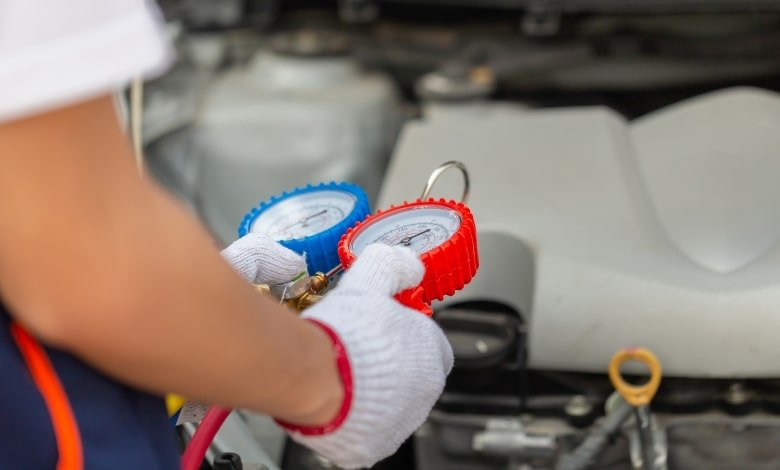How Do Air Conditioning Systems Work in a Car?

When the summer heat is at its peak, and you’re cruising down the road, your car’s air conditioning system becomes your best friend. But have you ever wondered how this marvel of automotive comfort actually works?
In this article, we’ll delve into the inner workings of car air conditioning systems, breaking down the science behind how they keep you cool and comfortable during your journeys.
Understanding the Basics of Car Air Conditioning Systems
At its core, a car air conditioning system is designed to remove heat and humidity from the interior of your vehicle, providing a comfortable environment for passengers. This is achieved through a carefully orchestrated process involving several key components.
Key Components of a Car’s AC System
A car’s air conditioning system, particularly in the context of auto air conditioning repair in Toronto, consists of a variety of components, with each playing an indispensable role in the intricate cooling process. These vital components encompass the compressor, condenser, expansion valve, evaporator, blower fan, thermostat, and refrigerants.
Step-by-Step Process of Cooling the Air
The cooling process begins with the compressor, responsible for compressing the refrigerant gas, which increases its temperature and pressure. This high-pressure gas then flows to the condenser.
Regulating Temperature: The Thermostat’s Role
The thermostat serves as the control center, monitoring the cabin temperature and regulating the AC system accordingly. When the temperature rises above the set level, the thermostat activates the compressor.
The Power of Refrigerants in Cooling
Refrigerants, chemical compounds with low boiling points, play a vital role in the cooling process. They undergo phase transitions from gas to liquid and back, absorbing and releasing heat in the process.
Compressor: Squeezing the Heat Away
The compressor takes in low-pressure, low-temperature refrigerant gas and compresses it into high-pressure, high-temperature gas. This gas then moves to the condenser.
Condenser: Releasing Heat to the Outside
The condenser’s primary function is to release the heat absorbed by the refrigerant. As air passes through the condenser, the refrigerant releases heat and transforms into a high-pressure liquid.
Also Read: Should You Buy a New or Slightly Used Car
Expansion Valve and Evaporator: Creating Cool Air
The expansion valve controls the flow of high-pressure liquid refrigerant into the evaporator. As the refrigerant expands, it turns into a low-pressure gas, drawing heat from the surrounding air and creating cool air.
Air Filtration and Purification
Before it reaches the cabin’s interior, the air undergoes a thorough passage through high-quality filters that effectively remove a wide array of dust particles, allergens like pollen, as well as various pollutants. This meticulous filtration process ensures that the air circulating within the car remains remarkably clean, remarkably fresh, and significantly contributes to the overall comfort of the occupants.
Blower Fan: Circulating the Refreshing Air
The efficient blower fan diligently pushes the cooled and refreshing air from the evaporator into the cabin, creating and maintaining a consistently comfortable environment for all the passengers to enjoy.
Managing Humidity Levels
AC systems help manage humidity levels by removing excess moisture from the air. This not only enhances comfort but also prevents fogging of windows.
Fuel Efficiency and AC Usage
While AC systems offer comfort, they can impact fuel efficiency. Using the AC moderately and keeping windows closed at high speeds can help maintain fuel efficiency.
Common AC Problems and Troubleshooting
AC systems can face issues like refrigerant leaks, compressor malfunctions, and more. Regular maintenance and timely repairs are essential to avoid such problems.
Maintenance Tips for Longevity
To ensure your car’s AC system operates efficiently, regular maintenance is crucial. This includes checking refrigerant levels, cleaning the condenser, and changing filters.
Conclusion
In conclusion, understanding how car air conditioning systems work helps you appreciate the technology that keeps you comfortable during your travels. By grasping the role of each component, you can better maintain your “auto air conditioning repair” AC system and ensure it serves you well for years to come.




